When I decided to change my late summer travel hiking trip from the Italian and Swiss Alps to Slovakia for hiking in Tatra National Park, I noticed I had a 20 year old Rough Guide travel book for Czech Republic and Slovakia on my bookshelves. In the 300 or so pages book, there are only a couple of pages devoted to Košice, kind of an afterthought for the traveler planning to visit the region.
I figured I would spend a couple of nights in Košice so I could make a first hand comparison of Košice to Bratislava. Košice is the second largest city in Slovakia (pop. about 240,000) in the eastern part of the country near the border of Hungary and Bratislava is the largest city (pop about 415,000) and capital in the southwestern part of Slovakia on the border with Austria.
Slovakia on Google maps
First impression upon arrival as the plane descended to low altitude was seeing heavy smoke plumes from an array of smokestacks amidst huge power plants, some 10 miles outside the city center. My research shows the power is primarily for steel production in central Europe’s large manufacturing complex now owned by Pittsburgh-based US Steel corporation. They are the largest single private employer in Slovakia with more than 12,000 employees in the Kosice region. Upon touchdown, after passport control on a Saturday evening, I learned the bus service to the city only operates every two hours on weekends. I had just missed the bus into the city.
The taxi was 10 EUR for the 7 km ride into the city and the views along the way were shopping malls, housing blocks and strip mall businesses. Nothing looked too appealing to me around Košice.
First impressions of Košice did not impress me. I arrived at the DoubleTree Hotel Kosice, a 12 story monolith towering over most of the neighboring buildings. My 10th floor view of Košice at night showed a city with many neon lighted signs, including McDonald’s in a nearby large shopping mall complex. It was Saturday night, warm, in the 80s outside. The window view from the hotel hallway offered a more appealing view of Košice where I could see a large lighted cathedral in the Stare Mesto–Old Town.
I headed out of the hotel in the direction of the cathedral to see what was happening in Košice on a Saturday night. I was pleasantly surprised to find there was quite a bit of activity happening in the long and wide Hlavna pedestrian zone directly around the corner from the DoubleTree Košice hotel entrance.
Music greeted me around the corner where I saw a stage and people dancing. Booths were set up for the Košice Wine Festival. A small motorized train trolley was loaded with 20 or so passengers. I saw the train trolley several times over the next couple of hours transporting people up and down the Hlavna pedestrian zone. Wine is fine for some people, but my drink of choice is beer and I was looking for a place the hotel receptionist recommended called Hostinec.
The temperature had been in the upper 80s during the day and it was too warm for me to drink indoors at Hostinec. I sat outside on the sidewalk at a table with one lone chair remaining amidst a crowd of drinkers and families. I ordered my first beer in Slovakia.
Price for 0.5 L of craft pale ale was 1.69 EUR or about $1.90 USD. I had a good feeling this trip to Košice was going to turn into a good evening. While drinking, I listened to live rock music coming from somewhere nearby. After my pint, I gravitated to the music further down the Hlavna.
KoÅ¡ice was also celebrating the opening night of its designation as the 2016 European City of Sport. A Slovakian rock band, Heľenine oÄi, played on stage. They were obviously popular as hundreds of people, young and old, sang along to their lyrics.
Heľenine oÄi were in the sporting spirit. The lead singer led the crowd in dance exercise moves to a good beat rock song and the people were pumped up. It was exhilarating to be in a multi-generational family crowd rocking to music in the city center street party listening to people sing loudly words I did not comprehend. It was all good fun. These are the kinds of European memories of street parties I fondly remember from my early teenager years when my father, a US Army helicopter mechanic, was stationed near Mainz, Germany.
Continuing down the Hlavna in search of another brew within listening distance to the sound stage took me to Lokal, another restaurant-pub with absolutely nobody indoors. I ordered a Dudak Premium beer and was even more surprised to learn it only cost 1.30 EUR for 0.5 L (16.9 oz). I found a seat outside where I soaked in the ambience of a warm summer festival evening in Košice on a Saturday night listening to music amplified in the streets of the city center.
The next day, on Sunday, I walked around a near empty Hlavna at 1pm in the afternoon. Were people nursing wine hangovers?
This photo shows the same stretch of Hlavna at 1pm Sunday occupied by a couple of thousand people Saturday night.
After walking around Košice for a couple hours I found little else of interest to me away from the Hlavna zone. Most of the pubs, restaurants and stores I passed by in the city were closed on Sunday. Hlavna sidewalk café activity picked up again in the late afternoon.
Two days in the city of Košice were enough to acclimate to Slovakia. I was ready to head to the mountains, Vysoké Tatry, the resort towns of the High Tatra Mountains, Europe’s smallest alpine mountain range, which is where I am now as I write this piece.
Sites of Košice, mostly on Hlavna
St. Michael Chapel is a Gothic chapel, once surrounded by the city cemetery.
St. Elizabeth Cathedral is the easternmost Gothic cathedral in Europe and the largest church in Slovakia. It dates from the 14th century.
Andy Warhol’s parents were northeastern Slovakians who emigrated to America. On this side street, off the Hlavna, I came across a large shoe, a 2012 art work dedicated to Andy Warhol.
I walked through a narrow park on a parallel street to Hlavna which seemed to be a major traffic artery through the city center.
There was a tree lined park section between roads with chess boards, but nobody was in the park playing. I often drink beers in parks around Europe simply because it is allowed around most of Europe. Fortunately for me, I saw the signs stating one of the major park rules in Košice is no alcohol in city parks. Considering the cost to buy a pint of beer in a restaurant is only double the price of a beer in the store, there is really no economic reason for a tourist to drink in public parks. It is not like in the USA where a $1 beer from the store costs $5 to $8 in a bar.
National Theater on Hlavna is across the street from the Hostinec brewery.
St. Urban’s Tower holds a bell blessed by St. Urban, patron saint of winemakers.
Immaculata (1723), Plague Column of the Virgin Mary commemorates the end of the 1709-10 plague epidemic of Košice.
Jakab’s Palace is not an old city palace, but rather the fanciful residence of Péter Jakab, one of Košice’s premier architects of the 19th century. This was the most interesting thing I saw in Kosice that was not on the Hlavna. It is across from the city park, which leads to the city train station.
Between St. Elizabeth Cathedral and the National Theater, a Peter Jakab structure, is the singing fountain with carillon. This is Slovakia’s smaller version of the Bellagio fountains in Las Vegas. Watching the fountain spray streams of water while the tune of the Beatle’s Yesterday played on the carillon consisting of 22 bells is one of my fondest memories of Košice.


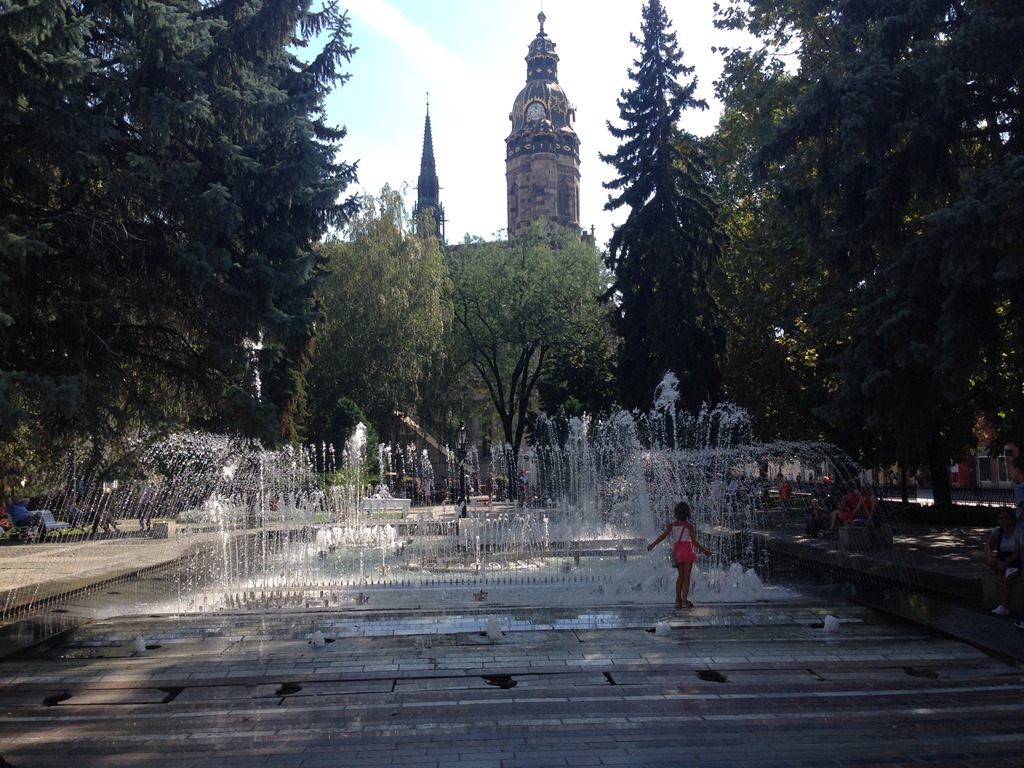
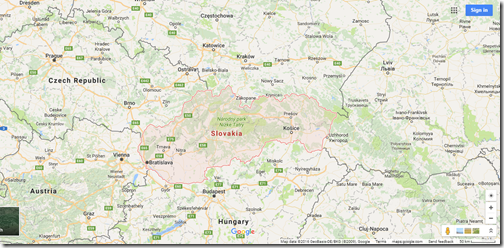
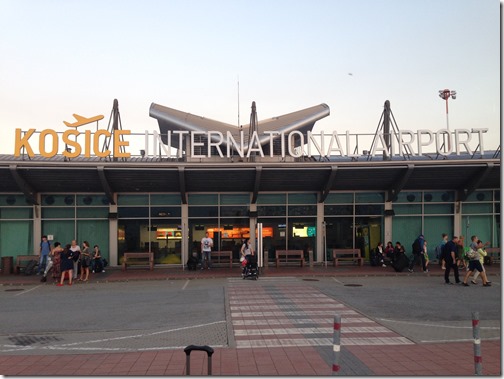
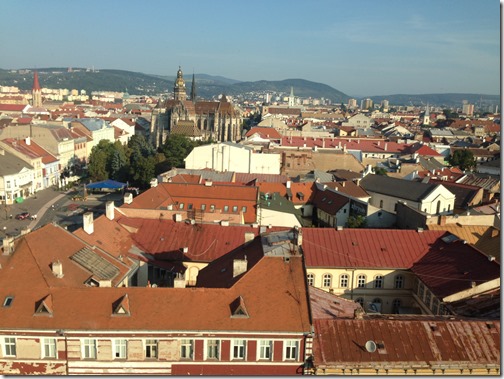
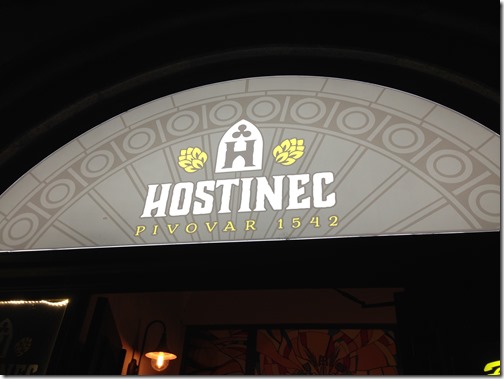
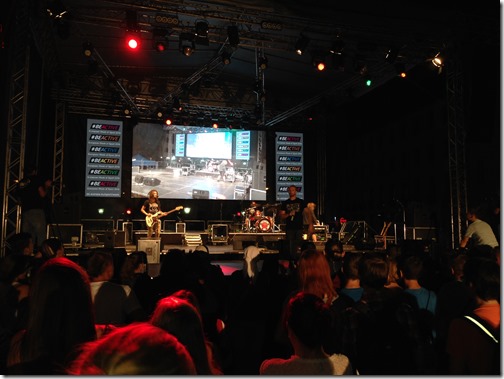
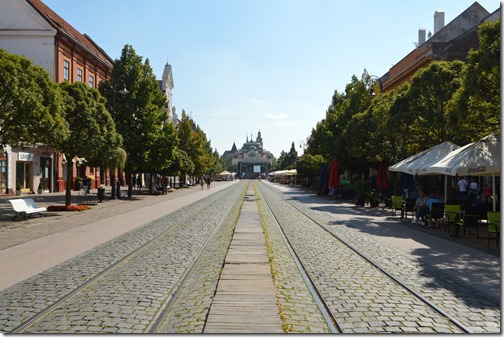
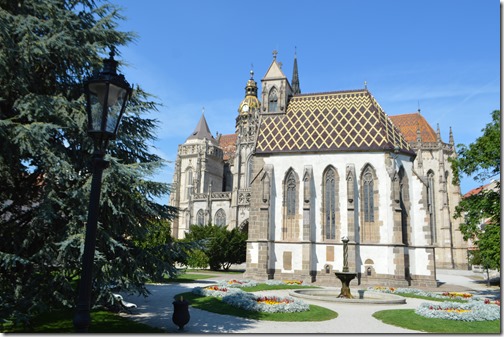
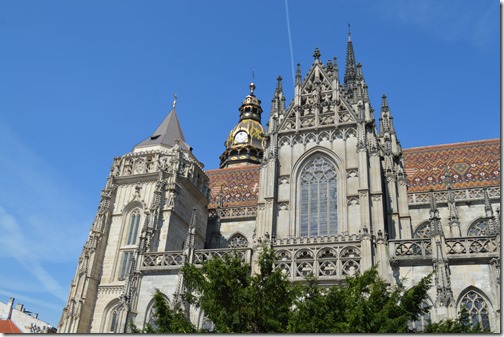
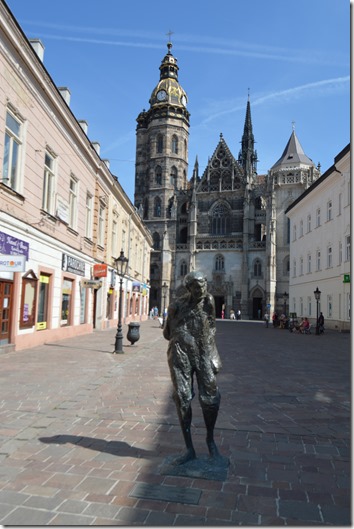

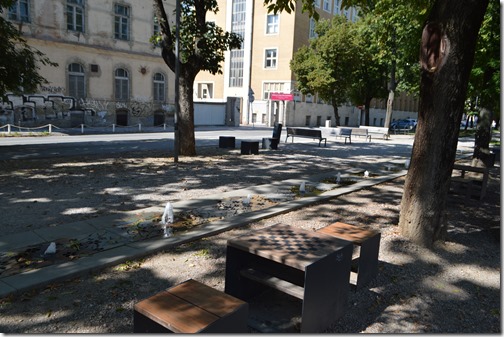
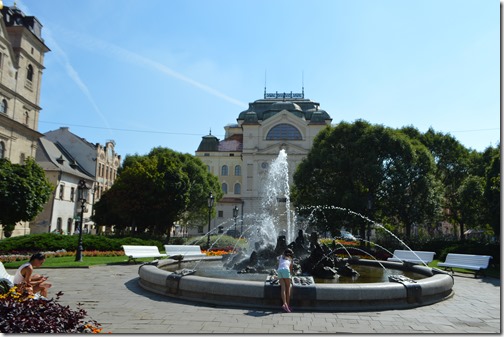
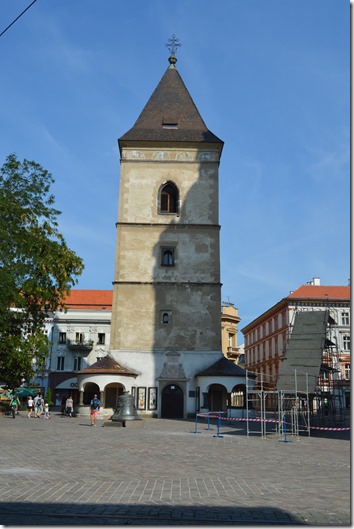
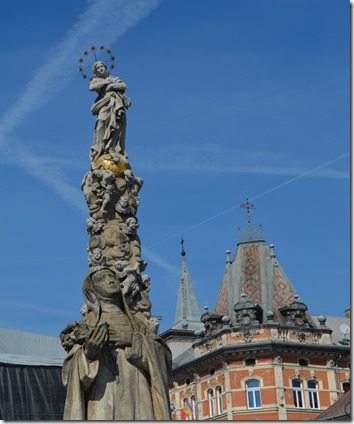

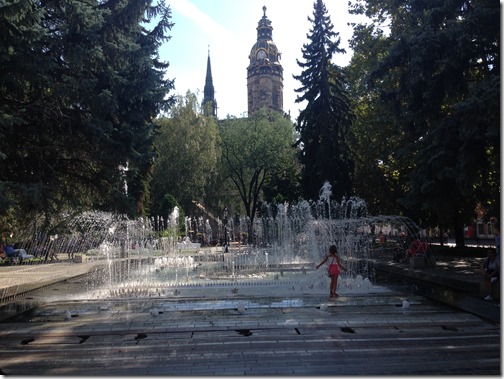

1 Comment
Comments are closed.